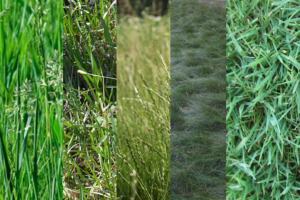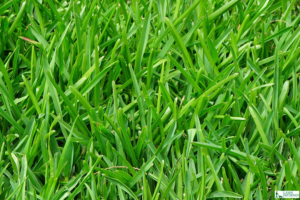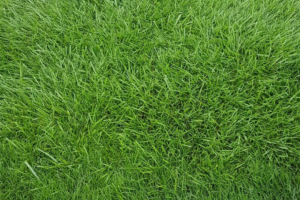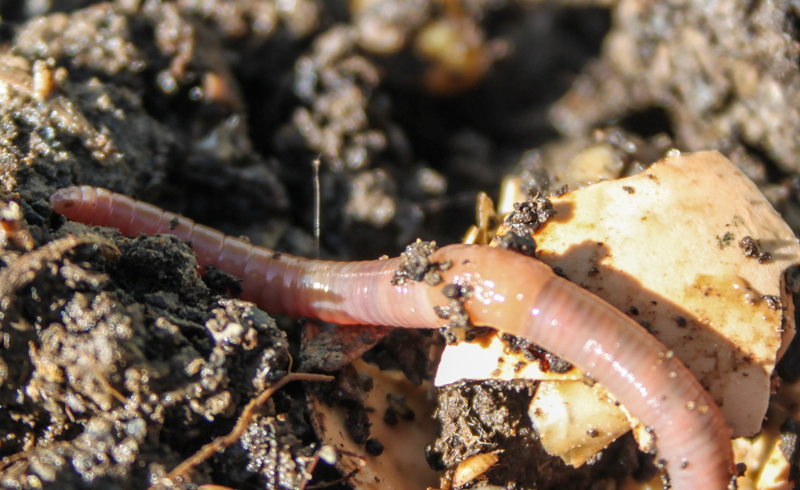
Introduction
Soil health is a critical factor in maintaining a lush, vibrant lawn. Healthy soil provides the necessary nutrients and conditions for grass to grow strong and resist diseases, pests, and environmental stresses. The soil in your lawn serves as the foundation for your grass, and its health directly impacts the appearance and vitality of your lawn.
A well-nourished soil will foster deep root systems, promote better water retention, and facilitate the efficient use of fertilizers. Conversely, poor soil health can lead to weak, thin grass, increased susceptibility to pests and diseases, and an overall decline in the aesthetic appeal of your lawn. Therefore, understanding and maintaining soil health is essential to lawn care.
This post aims to provide homeowners and lawn care enthusiasts with a comprehensive guide to assessing the health of their lawn’s soil through simple DIY tests. These tests can be performed with minimal equipment and provide valuable insights into the soil’s composition and nutrient levels.
By conducting these tests, you can make informed decisions about lawn care practices, such as watering, fertilizing, and choosing the right type of grass for your soil. This guide will help you understand the current state of your soil and provide tips on improving its health to achieve a lush, beautiful lawn.
The Importance of Soil Health for Lawns
Role of soil in lawn health and grass growth
The soil in your lawn is more than just a medium for holding grassroots; it’s a complex ecosystem that provides essential nutrients, water, and oxygen to your grass. Healthy soil teems with beneficial microorganisms that break down organic matter into nutrients that grass can absorb. These nutrients, including nitrogen, phosphorus, and potassium, are vital for grass growth and development.
Furthermore, the soil structure, which refers to how soil particles (sand, silt, and clay) are organized and clumped together, plays a significant role in water retention and drainage. A well-structured soil will have plenty of pore spaces, allowing roots to penetrate deeply and water to drain effectively, preventing waterlogging while ensuring the grass has access to the moisture it needs.
Impact of soil health on the appearance and resilience of your lawn
The health of your soil directly influences the appearance of your lawn. Healthy, nutrient-rich soil promotes the growth of thick, lush, and vibrant grass that can resist pests and diseases. On the other hand, poor soil health can lead to sparse, discolored, or patchy grass, detracting from the aesthetic appeal of your lawn.
Beyond aesthetics, soil health also impacts the resilience of your lawn. Lawns with healthy soil are better equipped to withstand environmental stresses like drought, heavy foot traffic, and temperature extremes. They can recover faster from damage and require less maintenance in the long run. Therefore, investing time and effort in improving soil health can save you from future lawn troubles and help maintain a beautiful, resilient lawn year-round.
Importance of regular soil testing for lawns
Regular soil testing is a crucial part of lawn care. It allows you to monitor your soil’s nutrient levels and pH, identify deficiencies or imbalances, and take corrective action before serious problems arise. Without testing, you’re flying blind, and your lawn care practices may not be as effective as they could be.
Soil testing is essential when establishing a new lawn or dealing with persistent lawn problems. It can guide your choice of grass type, fertilization regimen, and other lawn care practices. By understanding your soil’s needs, you can create a more targeted and effective lawn care plan, leading to a healthier, more vibrant lawn.
Understanding Soil Composition for Lawns
Explanation of soil components (minerals, organic matter, water, and air)
Soil is a complex mixture of components, each crucial in supporting plant life. The primary components of soil are minerals, organic matter, water, and air. Minerals, derived from weathered rocks, provide the basic structure of the soil and supply many of the nutrients plants need.
Organic matter, or humus, is the decayed remains of plants and animals. It enriches the soil by increasing its capacity to hold water and nutrients, promoting soil aggregation and fostering the growth of beneficial microorganisms. Organic matter is a critical factor in soil fertility and is especially important for lawns, which often have a high demand for nutrients.
Importance of each component in lawn soil health
Each component of the soil contributes to lawn health in its way. Minerals provide essential nutrients for grass growth, while organic matter improves the soil’s structure, nutrient-holding capacity, and microbial activity. Water is necessary for transporting nutrients to the grass roots and the grass’s metabolic processes. Air in the soil, particularly oxygen, is vital for root respiration and the survival of beneficial soil organisms.
The balance between these components is also critical. For instance, a good balance between water and air in the soil ensures that the grass roots receive enough oxygen without being waterlogged. Similarly, a balance between mineral and organic matter ensures that the soil has a good structure for root growth and water movement while also being fertile.
How different grass types require different soil compositions
Different types of grass have different soil requirements. Some grasses, like Kentucky bluegrass, prefer rich, well-drained soils with a good supply of organic matter. Others, like Bermuda grass, can tolerate poorer, sandy soils.
Understanding your grass type’s soil preferences is crucial for lawn success. For instance, if your soil is heavy clay, you might choose a grass type tolerant of poorly drained soils or amend the soil to improve its structure and drainage. Regular soil testing can help you monitor your soil’s composition and make necessary adjustments to meet the needs of your grass.
DIY Soil Health Tests for Lawns
Jar Test
The jar test is a simple and effective way to determine the texture of your soil, which is the proportion of sand, silt, and clay. This test can help you understand how well your soil drains, how easily you can work it, and what nutrients it needs. You’ll need a clear jar with a lid, water, and a soil sample from your lawn to perform the test.
Once you’ve filled the jar with soil and water, shaken and settled it, you can see distinct layers representing sand, silt, and clay. The thickness of these layers will give you an idea of your soil’s texture. For instance, if the sand layer is thick, you have sandy soil, which drains quickly but may need to hold nutrients better. Understanding your soil’s texture can guide you in choosing the right grass type and managing your lawn’s watering and fertilization.
pH Test
The pH test measures the acidity or alkalinity of your soil, which can affect nutrient availability and microbial activity. Most grasses prefer slightly acidic to neutral pH, but some can tolerate more acidic or alkaline conditions. A pH test can be done using a home test kit or a digital pH meter.
After testing, if your soil’s pH is too high or too low for your grass type, you can adjust it. For instance, adding lime can raise soil pH, making it less acidic, while adding sulfur can lower soil pH, making it more acidic. Regular pH testing and adjustment can help ensure that your soil provides an optimal environment for your grass to absorb nutrients.
Worm Test
The worm test is a simple way to assess the biological health of your soil. Earthworms are beneficial for soil as they break down organic matter, improve soil structure, and increase nutrient availability. A healthy lawn soil should have a good population of earthworms.
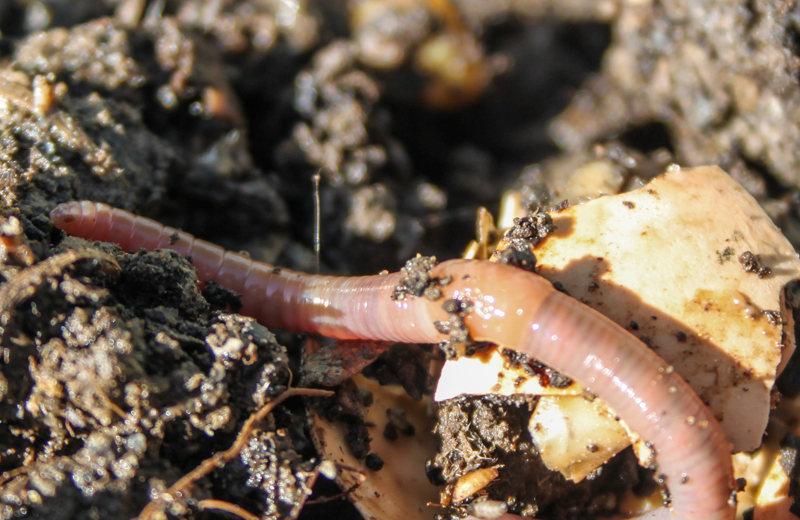
Count the number of earthworms in a specific soil volume to perform a worm test. If you find fewer than ten earthworms per cubic foot of soil, your soil may need more organic matter or have other issues, such as compaction or acidity. Adding compost or organic matter can help increase earthworm populations and improve soil health.
Squeeze Test
The squeeze test is another easy way to assess your soil’s texture. You can get a rough idea of its sand, silt, and clay content by moistening and squeezing a soil sample in your hand. For instance, sandy soil will fall apart; silty soil will hold together but not form a ribbon, and clayey soil will form a long ribbon.
The squeeze test can give you immediate feedback on soil texture and workability. If your soil is too sandy or clayey, you might amend it with organic matter to improve its texture and nutrient-holding capacity. Or, choose a grass type well-suited to your soil’s natural texture.
How to Improve Soil Health for Lawns
Organic matter and composting for lawns
Organic matter plays a crucial role in improving soil health. It enhances the soil’s structure, increases its capacity to hold and supply nutrients, and fosters the growth of beneficial soil organisms. Composting is one of the best ways to add organic matter to your soil.
Compost is decomposed organic material that is rich in nutrients and beneficial microorganisms. Composting your lawn can improve soil fertility, structure, and moisture retention. It can also help suppress diseases and pests. You can make compost at home from kitchen scraps and yard waste or purchase it from a garden center.
Proper watering and drainage techniques for lawns
Water is essential for grass growth, but too little can harm your lawn. Proper watering techniques can help ensure that your grass gets the right amount of water while preventing problems like waterlogging or drought stress.
Generally, watering deeply and infrequently rather than shallowly and often is better. Deep watering encourages the growth of deep roots, making your lawn more resilient. The amount and frequency of watering will depend on your grass type, soil, and climate, but a good indicator is to water when the top 1-2 inches of soil are dry.
Good drainage is also essential for lawn health. Poorly drained soils can become waterlogged, depriving grass roots of oxygen and promoting the growth of diseases. If your soil drains poorly, consider improving its structure by adding organic matter or sand or installing a drainage system.
Choosing the right grass type for your soil
Different grass types have different soil requirements. Some grasses prefer rich, well-drained soils, while others can tolerate poor, dry, or compacted soils. Choosing the right grass type for your soil can make lawn care easier and more successful.
Before choosing a grass type, consider your soil’s texture, pH, and fertility, as well as your climate and the amount of sun and traffic your lawn receives. Some grass types, like Kentucky bluegrass, require high fertility and good drainage, while others, like tall fescue, are more tolerant of poor soils and drought.
If you’re establishing a new lawn, it’s a good idea to test your soil and choose a grass type well-suited to your soil conditions. If you’re managing an existing lawn, understanding your grass type’s soil preferences can guide you in improving your soil and lawn care practices.
Conclusion
Recap of the importance of soil health and DIY testing for lawns
Soil health is the foundation of a thriving, vibrant lawn. Understanding the composition of your soil and its health can guide you in making informed decisions about watering, fertilizing, and choosing the right grass type for your lawn. The DIY soil tests discussed in this post provide a simple and effective way to monitor your soil’s health and make necessary adjustments. Regular soil testing can help you maintain optimal soil conditions, leading to a healthier, more resilient lawn.
Regular soil testing and maintenance for healthier lawns
Regular soil testing and maintenance should be integral to your lawn care routine. Investing time and effort in understanding and improving your soil can enhance your lawn’s beauty and resilience. Remember, healthy soil leads to a healthy lawn. So, pay attention to the soil beneath your feet. Embrace the DIY tests, understand your soil, and let it guide you in nurturing a lawn you can be proud of.

Bob Green, a passionate lawn care enthusiast with over two decades of landscaping experience, is this website’s proud owner. His vast knowledge of horticulture and dedication to helping homeowners maintain beautiful lawns are reflected in the valuable content he shares on his platform. John has always been interested in Agrostology.









